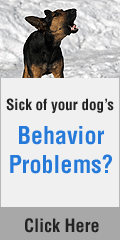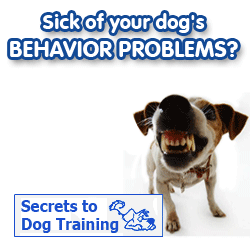For all of us humans, it may be a little hard to recognize the doggy practice of licking each other in greeting. We don’t get it done, in the end, despite the fact that our tongues prove useful for such things as ice-cream eating and drawing that last dollop of peanut butter from the knife, we certainly wouldn’t welcome a customer into the house by providing them a lengthy, residual lick around the oral cavity (unless of course you had been raised to embrace certain social mores presently uncommon in Western society). Dogs use their tongues look around the world.
A dog’s tongue is really as important (and helpful) to him as our eyes and hands will be to us: it’s a multi-purpose utility tool, accustomed to taste things, explore the existence of new people and creatures, express submissiveness, and to show you he values your companionship and friendship. Licking is really a completely natural behavior for dogs, and more often than not, the knowledge isn’t something to bother with: the odd lick from the warm, moist tongue in your hands or ankle is, at worst, tolerable (and, I have to admit, I really think it is pretty adorable when my dog licks me - however again, he’s trained not to go overboard, and so i don’t need to bother about the obstructing capabilities that the 100-pound male Rottweiler’s tongue offers!)
Some dogs simply take things too much though, which is where problems can occur. It isn't enjoyable to become persecuted in your house with a far-reaching, agile, mobile, and slobbery tongue: some won’t let you receive a moment’s relaxation, and can pursue you against bed room to hallway to lounge to kitchen, making sporadic dive-bombings of love in your toes, ankles, calves - anywhere that flesh is uncovered and available.
As well as for a tall dog, the accessible terrain is a lot more varied, and therefore, enticing - ever endured a lengthy, wet dog’s tongue lathering your bellybutton while you stretch as much as individuals elusive top shelves? When unpredicted, the resultant shock is greater than a trifle unbalancing! Lots of dogs won’t restrict themselves for your skin alone, either, and proprietors of those dogs will verify the always-visible consistency of dog saliva on clothing: whether your outfit is black, whitened, or the myriads of shades among, there’s nothing beats a viscous patch of dog slobber on the freshly-washed hemline to market your possession status (as well as your dog’s personal degree of demonstrativeness) around the world in particular. And when it’s dried, it’s there ’til the following laundry run: the physical proof of a dog’s friendship is much like egg whitened.
It’s there, it’s dried on, and it is not coming off until a mix of suds, warm water, and energetic efforts are applied. And all sorts of this since your dog really wants to say “I love you”! But there’s frequently a little more into it than simply plain affection. As with every animal behavior, the logic behind licking is generally more complicated and subtle than you may think, and also the same gesture might have multiple meanings determined by circumstance, your dog’s frame of mind, and also the other actions being showed simultaneously.
So, although we are able to postulate before the cows get home (or until your pet stops licking - whichever comes first) why your dog’s licking you, such simplification aren’t always 100% accurate: it’s partially your decision to look for the reasoning behind those things. And, because you know your pet much better than other people, you’re the perfect candidate to do the job. In case your dog is licking you because he’s feeling affectionate and desires to show you, it’ll be pretty easy to determine whether this is actually the situation or otherwise.
His body gestures is going to be relaxed, even though the conditions is going to be variable, the nearby mood will normally be stress-free and happy: for instance, as he licks yourself on the shoulder or ear from his vantage-reason for the back burner as you’re driving him towards the park, or lathers both hands and arms with goodwill and devotion whenever you go back home from the hard day in the office. “Puppy love” is undoubtedly the most typical reason for licking: it's not anything to bother with, and it is easy to ‘cure’ him from the habit when the behavior is a concern for you personally. (We’ll reach that further lower the page.)
Another not-infrequent reason behind repetitive, owner-specific licking is your dog’s feeling anxious and stressed. If you will find things happening inside your dog’s existence to result in him disappointment or tension, he’ll frequently show it through obsessive-compulsive actions, and licking is a nice common symbol of these. Some dogs will lick themselves, others will lick you - it’s a real situation of person preference. It shouldn’t be way too hard that you should pinpoint the reason for your dog’s less-than-relaxed mindset: is he getting enough attention and mental stimulation, or perhaps is he alone inside for lengthy hrs every day by themself?
Does he get enough exercise and outdoors here we are at sniffing at, exploration, and general exuberant tomfoolery? Would you pay him plenty of attention when you are in your own home, or often greet him hurriedly before hurrying off and away to the next commitment? They are everything that it's important to consider, before adapting your way of life to deal with the problem accordingly. With respect to the conditions all around the licking, and also the overall quality of the dog’s existence, you may want to have general changes of your to make sure that, once the licking does stop, it’s because you’ve treated the reason, not the signs and symptoms - otherwise, you’re just attempting to remove an invaluable outlet for his negative feelings, that is impractical (and unfair in your friend, too). Possibly you have to get home more frequently throughout your day.
Possibly you ought to get up 30 minutes earlier each morning to provide him an increased pre-work walk (it differs from dog to dog, but typically of thumb, most dogs function best and therefore are at their most relaxed by having an hour along with a half’s exercise every day). Or possibly you need to simply hang out with him within the nights, playing, grooming, training, and merely chilling out together. Make certain you’re having to pay focus on his attitude (does he appear content?) and the activity levels before you decide to attempt to eliminate the licking behavior like a stand-alone problem: despite the fact that he can’t talk, he is able to still use his tongue to let you know something, and this can be what’s happening here. With that said though, more often than not excessive licking is just because of excessive exuberance inside your dog: he’s happy, he loves you, and that he needs to inform you at this time.
When you wish to understand across that his licking’s getting a little an excessive amount of for you personally, an easy alternation in your body gestures will convey your message noisy and obvious. All that you should do is withdraw the outward display of the affection for him to know that, really, you do not enjoy it as he covers the skin inside a composite of saliva, dog-food particulate matter, scraps of debris from his fur, and general dental-cavity detritus.
In plain British, which means that you just need to turn yourself from him: as he begins to lick, wake up and move away instantly. Make certain your eyes and face are significantly averted from him: face within the opposite direction. Preface this having a revolted-sounding “No!” if you want (I only say “No lick!” but you should use whatever comes naturally. Just keep your phrase short and simply-identifiable so that your dog rapidly discovers to identify it). At this time, he’ll most likely wake up and follow you. Watch for him to do this: the licking should begin anew soon. If this does, do this again. Withdraw all indications of affection from him again: turn away, wake up and then leave, a pay him manual intervention or speak with him (aside from another “No!” inside a disgusted, I-can’t-believe-you-haven’t-got-the-message-yet words). It’s likely your pet is going to be persistent.
He is not to become easily discouraged you’re the undisputed focal point of his existence, in the end, and that he needs to show you this whenever the chance should present itself. You need to simply outmatch him in persistency. Remain consistent together with your actions, and also the message will sink in. Don’t feel you need to shout or react adversely - the straightforward withdrawal of the love (or the look of this, anyway) is very enough. A thing of warning: many people enjoy it when dogs lick them, even when your dog concerned isn't their very own. If site visitors to your residence (or admiring passersby in the pub) greet your pet and permit him to lick them, it's important to intervene otherwise they’ll undo all of your great work. It’s recommended that you can explain in advance that you’re training him to not lick, after which explain the right response to allow them to take if he should begin to lick them. By doing this, you can be certain that the dog’s not really corrupted into undesirable actions again - which he’ll learn how to express his affection in other, more inviting ways.
For additional info on licking along with other problematic dog actions … You’ll most likely want to look at Tips for Canine Training. It’s an extensive, A-Z manual for that responsible pet owner, and handles nearly every canine behavior and training technique on the planet, from aggression to digging to whining to dog whispering to behavior training work. You can travel to the Tips for Canine Training site by hitting the hyperlink below:











